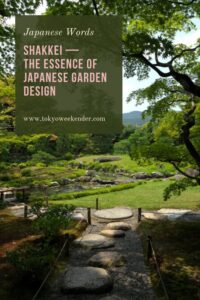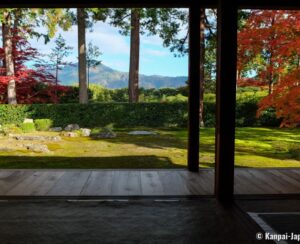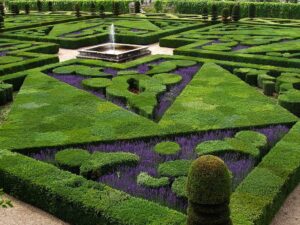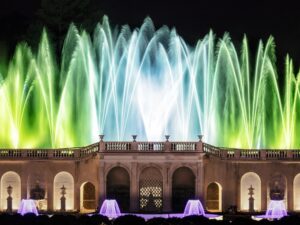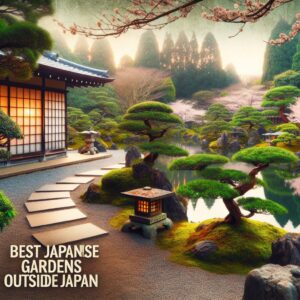Introduction
Whether you’re a seasoned gardener or a beginner, this guide aims to empower you with the knowledge to select plants that will thrive in your garden while providing the aesthetic and emotional benefits that Japanese gardens are renowned for.
Disclaimer: The plant list and variety descriptions included in this article are based on recommendations from Yoko Kawaguchi as found in ‘Authentic Japanese Gardens’ book. This article serves as a reference guide and does not intend to infringe upon the intellectual property rights of the author or publisher.
I. Foliage Selection: Cultivating Serenity with Leaves
Foliage plays a vital role in the design of a Japanese garden. It’s not just about the flowers; the leaves themselves can offer a spectrum of colors, textures, and shapes that contribute to the overall tranquility of the garden. Selecting the right foliage is the first step in creating your peaceful paradise.
|
Scientific and Common Name |
Description |
Size |
USDA Hardiness Zones |
Growing Conditions and Maintenance |
|---|---|---|---|---|
|
Aspidistra elatior (Ha-ran) |
Resilient plant with dark, glossy leaves that can add a lush, verdant texture to tea gardens. |
24 – 36 inches tall, 12 – 30 inches wide |
8 through 10 |
Shade, well-drained soil, regular watering during dry periods. |
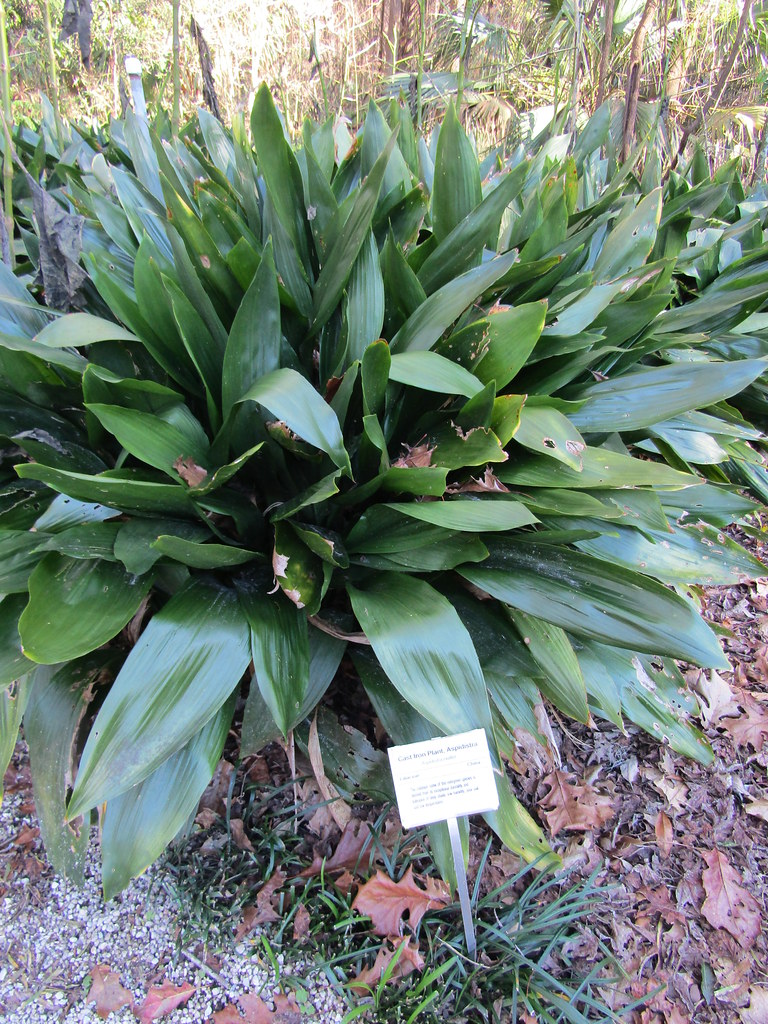
“Aspidistra elatior | Kanapaha Botanical …” from www.flickr.com and used with no modifications.
|
Scientific and Common Name |
Description |
Size |
USDA Hardiness Zones |
Growing Conditions and Maintenance |
|---|
|
Farfugium japonicum (Tsuwabuki) |
Evergreen perennial with glossy leaves that can bring a bright, reflective quality to shaded garden areas. |
30 cm (1 ft) in height |
7 through 10 |
Moist conditions, partial or complete shade, well-draining but consistently moist soil. |
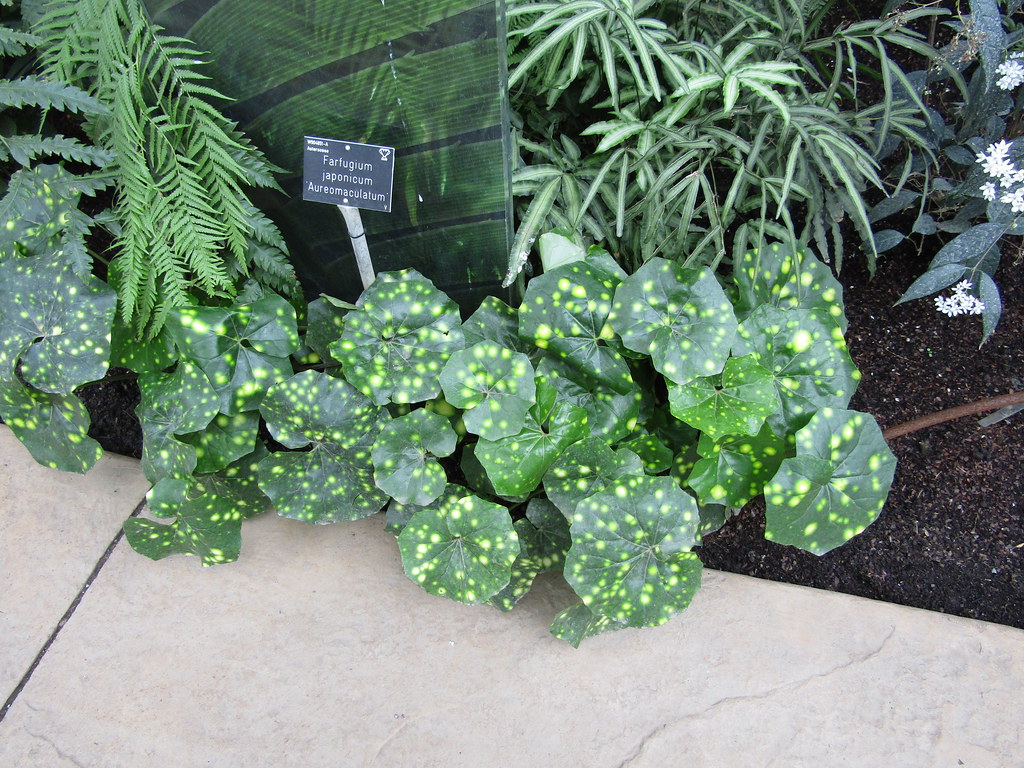
“Farfugium japonicum ‘Aureomaculatum …” from www.flickr.com and used with no modifications.
|
Scientific and Common Name |
Description |
Size |
USDA Hardiness Zones |
Growing Conditions and Maintenance |
|---|---|---|---|---|
|
Hosta spp. (Plantain Lily; Giboshi) |
Versatile perennials with a wide variety of leaf shapes, sizes, and colors, producing tall spikes of flowers in summer. |
Varies by species, from small to large |
Varies by species, from 3 through 9 to 3 through 8 |
Partial to full shade, well-drained, moist soil, regular watering, mulching in spring. |
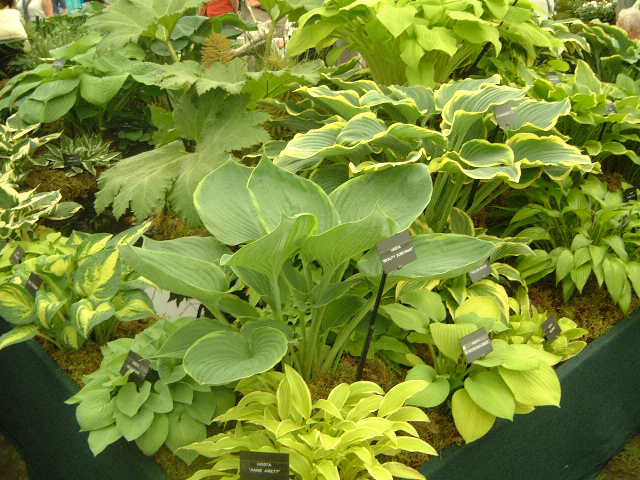
“Hosta spp | Alex Lomas | Flickr” from www.flickr.com and used with no modifications.
|
Scientific and Common Name |
Description |
Size |
USDA Hardiness Zones |
Growing Conditions and Maintenance |
|---|---|---|---|---|
|
Pachysandra terminalis (Japanese Spurge; Fukkiso) |
Evergreen ground cover that forms dense mats of glossy leaves in whorls. |
25 x 60 cm (10 in x 2 ft) |
5 through 8 |
Partial to deep shade, slightly acidic to neutral soil, annual acid fertilizer if soil is neutral, pinch out tips for denser growth. |

“09-02Pachysandra terminalis9696.jpg …” from commons.wikimedia.org and used with no modifications.
|
Scientific and Common Name |
Description |
Size |
USDA Hardiness Zones |
Growing Conditions and Maintenance |
|---|---|---|---|---|
|
Rohdea japonica (Japanese Sacred Lily; Omoto) |
Evergreen perennial with leathery leaves and greenish-yellow flower-heads followed by red or white berries. |
Foliage up to 30 cm (1 ft) long |
6 through 10 |
Moist, acidic soil in shade, suitable for understory planting or ground cover. |
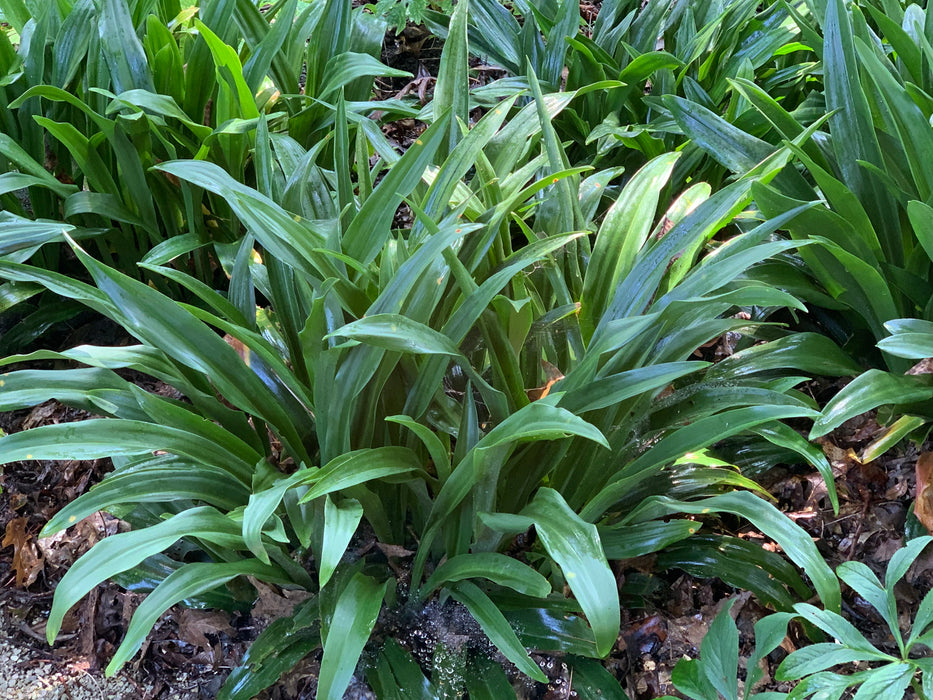
“Buy Rohdea japonica Omoto Sacred Lily …” from mrmaple.com and used with no modifications.
II. Flower Selection: Blooms that Captivate and Inspire
While foliage may be the bones of a Japanese garden, flowers are the fleeting moments of color that punctuate its green canvas. This section is dedicated to a curated list of flower varieties that bring a wave of blooms to the garden, carefully planned to ensure a continuous display throughout the seasons. The accompanying table will detail each flower’s description, size, USDA hardiness zone, and care instructions. These flowers are selected not only for their beauty but also for their ability to evoke the garden’s intended atmosphere of peace and reflection, ensuring that the garden is a place of beauty in all seasons.
|
Scientific and Common Name |
Description |
Size |
USDA Hardiness Zones |
Growing Conditions and Maintenance |
|---|---|---|---|---|
|
Arisaema thunbergii subsp. urashima (Urashima-so) |
Herbaceous perennial with a unique jack-in-the-pulpit-like spathe and poisonous roots. |
8 to 10 cm (3 to 4 in) |
5 through 9 |
Partial to full shade, humus-rich, moist, well-drained soil. |
“File:Arisaema thunbergii ssp. urashima …” from commons.wikimedia.org and used with no modifications.
|
Scientific and Common Name |
Description |
Size |
USDA Hardiness Zones |
Growing Conditions and Maintenance |
|---|---|---|---|---|
|
Aster tataricus (Shion) |
Tall perennial with pale, delicate lavender flowers blooming in autumn. |
Up to 2 m (6 ft 7 in) |
3 through 7 |
Moist soil, full sun, not suitable for shaded conditions. |

“Aster tataricus L.f., Tartarian aster …” from identify.plantnet.org and used with no modifications.
|
Scientific and Common Name |
Description |
Size |
USDA Hardiness Zones |
Growing Conditions and Maintenance |
|---|---|---|---|---|
|
Astilbe (Chidake-sashi) |
Dwarf hybrid ‘Sprite’ with dark foliage and pale pink flower spikes in summer. |
About 30 cm (1 ft) tall |
4 through 8 |
Rich, moist soil in partial shade, consistent moisture. |
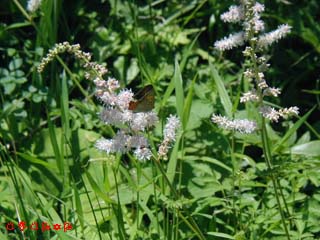
“Astilbe microphylla | chidakesahi” from riroflower-a-z.sakura.ne.jp and used with no modifications.
|
Scientific and Common Name |
Description |
Size |
USDA Hardiness Zones |
Growing Conditions and Maintenance |
|---|---|---|---|---|
|
Begonia grandis subsp. evansiana (Shukaido) |
Perennial with fleshy stalks, red flush around the nodes, and pale red single flowers. |
About 50 cm (1 ft 8 in) |
6 through 9 |
Protection from winter cold, moist, well-drained soil, partial shade. |
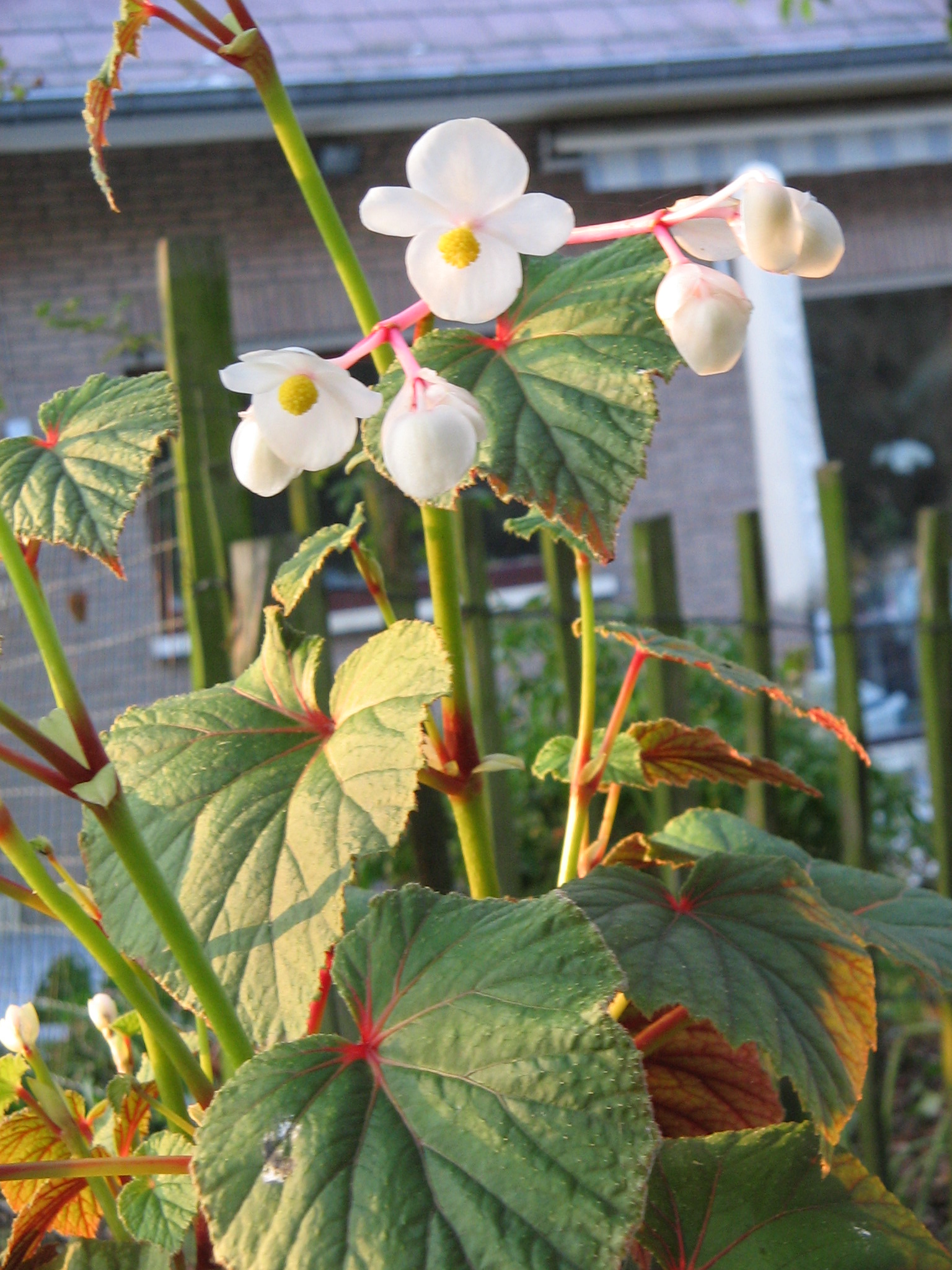
“File:Begonia grandis evansiana alba002 …” from commons.wikimedia.org and used with no modifications.
|
Scientific and Common Name |
Description |
Size |
USDA Hardiness Zones |
Growing Conditions and Maintenance |
|---|---|---|---|---|
|
Bletilla striata (Shi-ran) |
Deciduous terrestrial orchid with lance-shaped leaves and bright pink flowers. |
Not very tall |
5 through 9 |
Moist, rich soil, partial shade, mulch in autumn or lift and store tubers. |
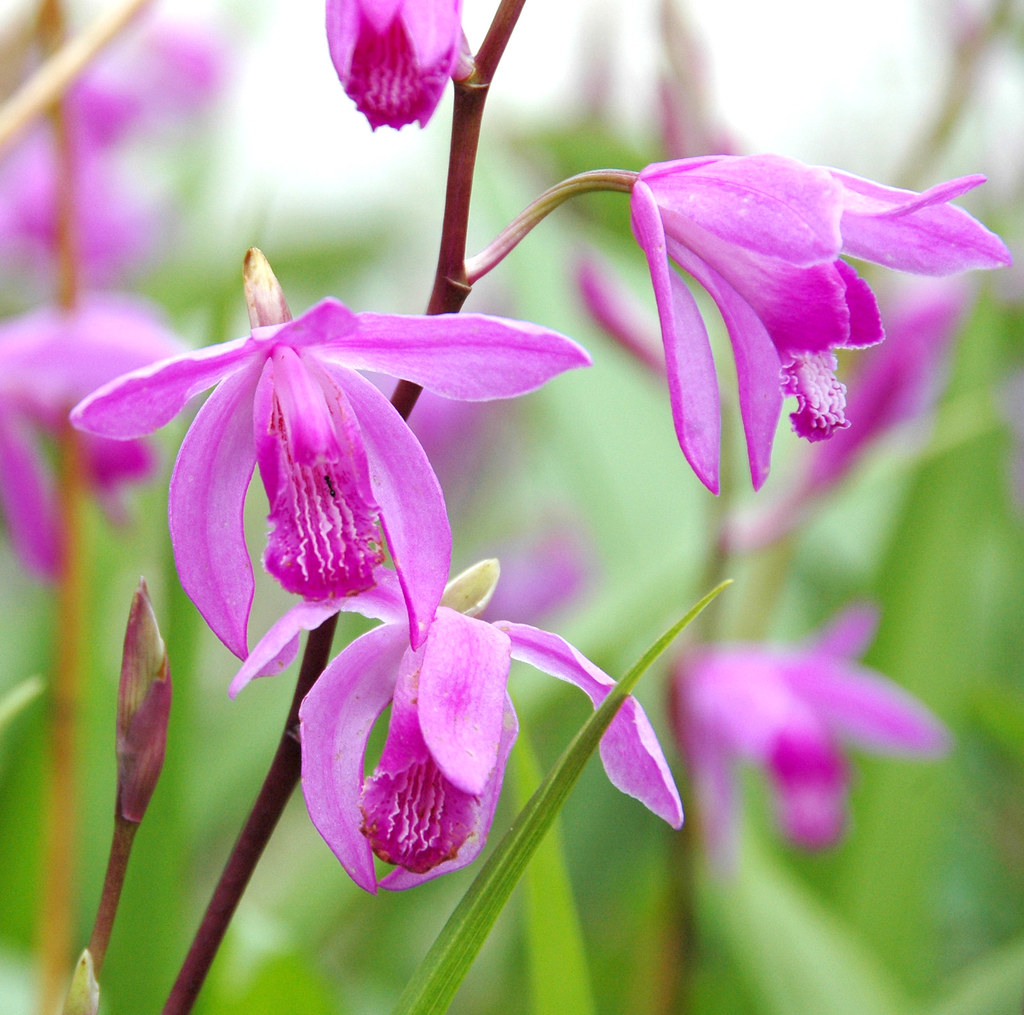
“Shi-ran | Shi-ran, 紫蘭, 白芨, Bletilla …” from www.flickr.com and used with no modifications.
|
Scientific and Common Name |
Description |
Size |
USDA Hardiness Zones |
Growing Conditions and Maintenance |
|---|---|---|---|---|
|
Calanthe discolor (Ground Orchid; Ebine) |
Woodland orchid from Japan with maroon and white flowers on a tall stem. |
Noticeable height |
6 through 9 |
Partial shade, moist, humus-rich, well-drained, acidic to neutral soil, dry in winter. |

“File:Calanthe discolor s3.jpg …” from commons.wikimedia.org and used with no modifications.
|
Scientific and Common Name |
Description |
Size |
USDA Hardiness Zones |
Growing Conditions and Maintenance |
|---|---|---|---|---|
|
Chelonopsis moschata (Jako-so) |
Slow-spreading perennial with tiny, deep mauve penstemon-like flowers. |
Up to 60 cm (24 in) |
5 through 9 |
Damp conditions, partial shade. |

“Chelonopsis moschata Miquel” from www7a.biglobe.ne.jp and used with no modifications.
|
Scientific and Common Name |
Description |
Size |
USDA Hardiness Zones |
Growing Conditions and Maintenance |
|---|---|---|---|---|
|
Chloranthus japonicus (Hitori-shizuka) |
Dainty perennial with a single spike of white, scented, bottlebrush-like flowers. |
Up to 60 cm (24 in) tall, 90 cm (36 in) spread |
6 through 9 |
Partial shade, moist, well-drained soil. |
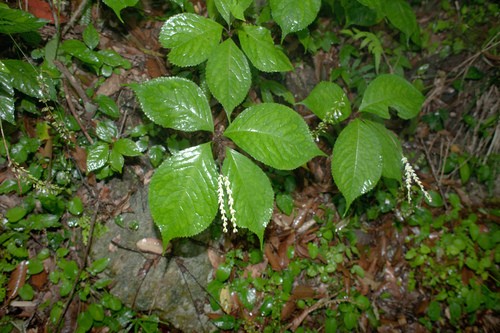
“Chloranthus Flower, Leaf, Care, Uses …” from www.picturethisai.com and used with no modifications.
|
Scientific and Common Name |
Description |
Size |
USDA Hardiness Zones |
Growing Conditions and Maintenance |
|---|---|---|---|---|
|
Chloranthus serratus (Futari-shizuka) |
Produces two spikes of scented, white, bottlebrush-like flowers. |
Similar to Chloranthus japonicus |
6 through 9 |
Moist, well-drained soil in partial shade. |

“Chloranthus serratus | Chloranthus …” from www.flower-db.com and used with no modifications.
|
Scientific and Common Name |
Description |
Size |
USDA Hardiness Zones |
Growing Conditions and Maintenance |
|---|---|---|---|---|
|
Clintonia udensis (Tsubame-omoto) |
Herbaceous, clump-forming perennial with bell-shaped white flowers in racemes. |
30 x 20 cm (1 ft x 8 in) |
5 through 8 |
Fertile, moist, neutral to acidic soil in partial or full shade. |
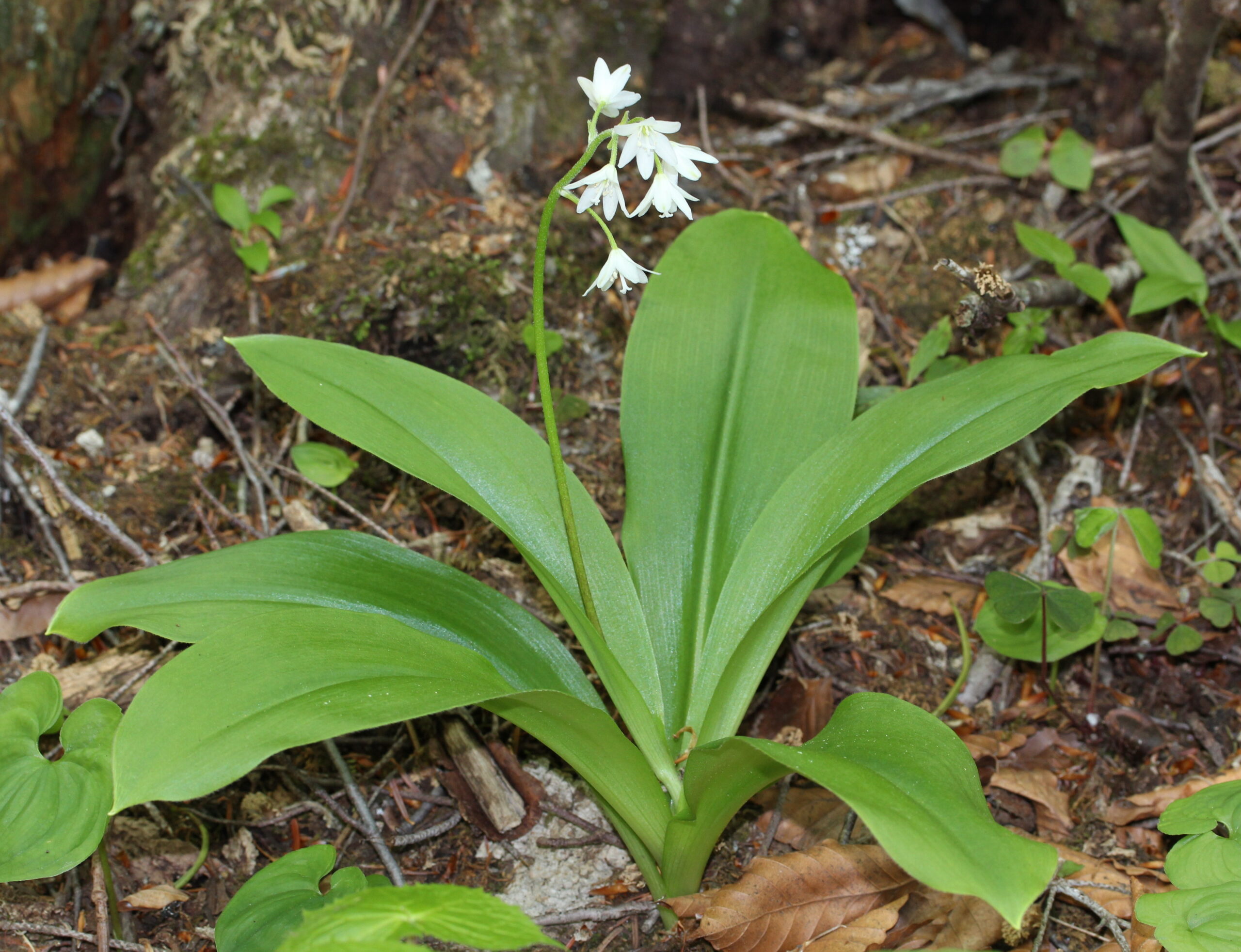
“File:Clintonia udensis 0s1.jpg …” from commons.wikimedia.org and used with no modifications.
|
Scientific and Common Name |
Description |
Size |
USDA Hardiness Zones |
Growing Conditions and Maintenance |
|---|---|---|---|---|
|
Dicentra peregrina (Bleeding-heart; Koma-gusa) |
Japanese herbaceous perennial with distinctive heart-shaped flowers. ‘King of Hearts’ cultivar has red flowers. |
Not specified |
5 through 9 |
Humus-rich, moist, slightly acidic soils in partial shade. Regular dead-heading and division every six to ten years. |

“Dicentra peregrina – Wikipedia” from en.wikipedia.org and used with no modifications.
|
Scientific and Common Name |
Description |
Size |
USDA Hardiness Zones |
Growing Conditions and Maintenance |
|---|---|---|---|---|
|
Disporum smilacinum (Chigo-yuri) |
Perennial with one or two pendent flowers on each stem in spring. |
20 to 25 cm (8 to 10 in) high |
4 through 8 |
Partial shade and consistently moist soil. |
“Disporum smilacinum A. Gray” from flowers3.la.coocan.jp and used with no modifications.
|
Scientific and Common Name |
Description |
Size |
USDA Hardiness Zones |
Growing Conditions and Maintenance |
|---|---|---|---|---|
|
Eupatorium fortunei (Fuji-bakama) |
Known for its pale lavender umbels that bloom in autumn. |
1 m (3 ft 3 in) |
4 through 9 |
Moist soil, full sun to partial shade. |
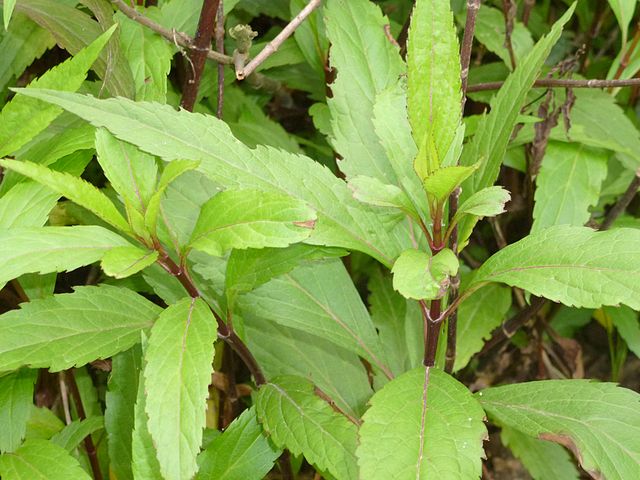
“Eupatorium fortunei – Wikipedia” from en.wikipedia.org and used with no modifications.
|
Scientific and Common Name |
Description |
Size |
USDA Hardiness Zones |
Growing Conditions and Maintenance |
|---|---|---|---|---|
|
Filipendula purpurea (Kyoganoko) |
Forms clumps of toothed leaves and feathery crimson flowers in summer. |
1.2 m x 60 cm (4 ft x 2 ft) |
3 through 8 |
Full sun to partial shade, moist soil, suitable near water. |
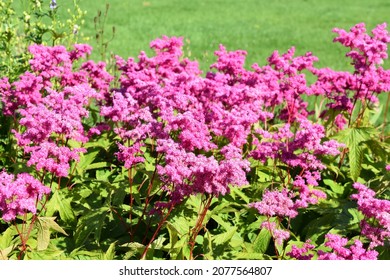
“Filipendula Purpurea Stock Photos – 37 …” from www.shutterstock.com and used with no modifications.
|
Scientific and Common Name |
Description |
Size |
USDA Hardiness Zones |
Growing Conditions and Maintenance |
|---|---|---|---|---|
|
Gentiana makinoi (Oyama-rindo) |
Herbaceous perennial with pale blue flowers in late summer. |
Not specified |
5 through 9 |
Acidic soil, full sun to partial shade, ideal for rock gardens or alpine settings. |

“File:Gentiana makinoi Kusn..jpg …” from commons.wikimedia.org and used with no modifications.
|
Scientific and Common Name |
Description |
Size |
USDA Hardiness Zones |
Growing Conditions and Maintenance |
|---|---|---|---|---|
|
Gymnaster savatieri (Gymnaster/Aster savatieri; Miyako-wasure) |
Produces pale blue or white aster-like flowers in late season. |
30 to 60 cm (1 to 2 ft) high, 60 to 75 cm (2 to 2.5 ft) spread |
5 through 7 |
Full sun or partial shade, adaptable to soil conditions. |
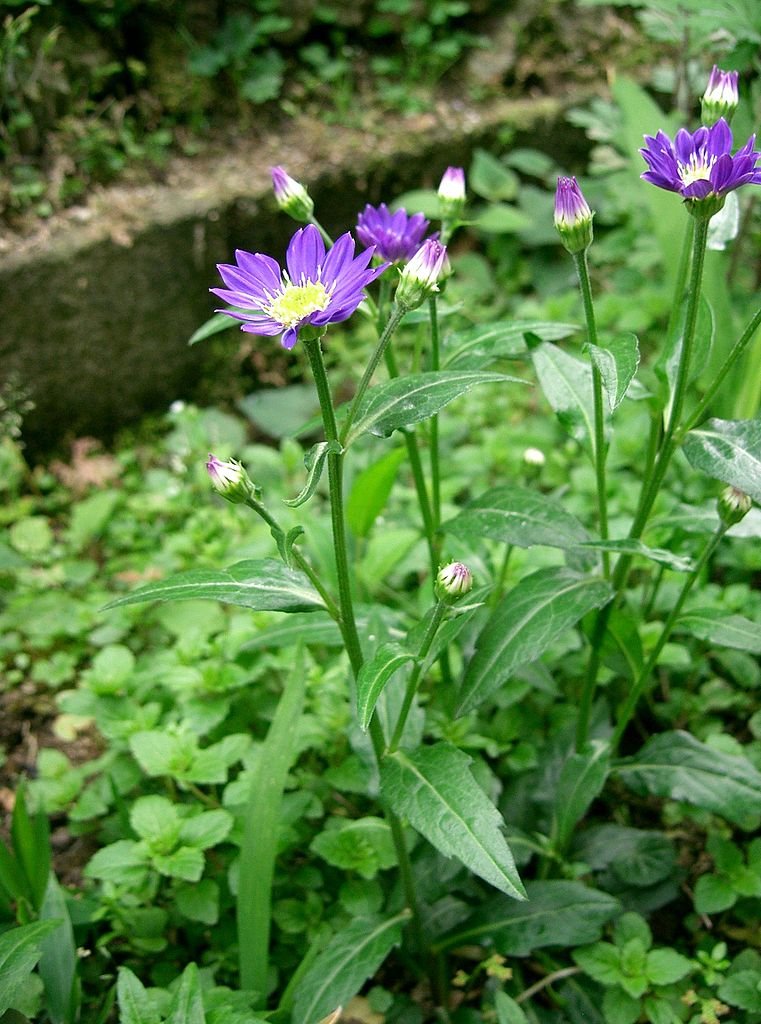
“Gymnaster savatieri — The Old Dairy …” from www.olddairynursery.com and used with no modifications.
|
Scientific and Common Name |
Description |
Size |
USDA Hardiness Zones |
Growing Conditions and Maintenance |
|---|---|---|---|---|
|
Heloniopsis orientalis (Shojo-bakama) |
Evergreen perennial with strap-like leaves and star-shaped flowers. |
Not specified |
5 through 8 |
Shade, moist, well-drained soil. |
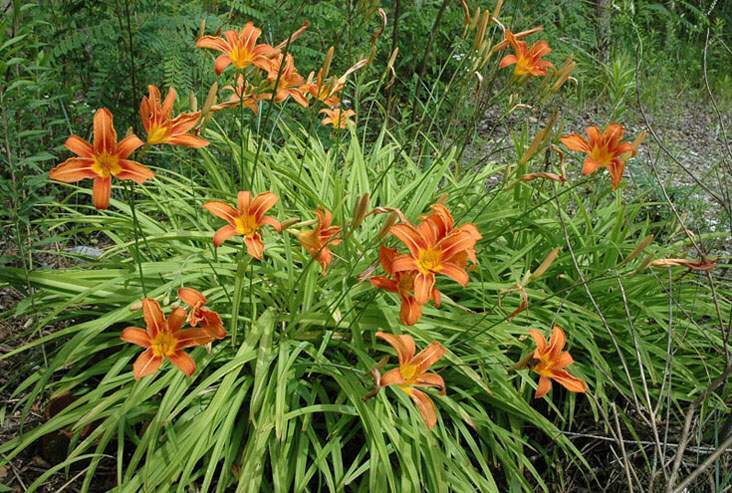
“Hemerocallis spp. & cvs. – Vancouver …” from vancouverislandgrows.wordpress.com and used with no modifications.
|
Scientific and Common Name |
Description |
Size |
USDA Hardiness Zones |
Growing Conditions and Maintenance |
|---|---|---|---|---|
|
Hepatica nobilis var. japonica (Yuki-wari-so) |
Semi-evergreen perennial with star-shaped purple-blue flowers in early spring. |
Not specified |
5 through 8 |
Neutral, heavy soil in partial shade, good for rock gardens, resents transplanting. |

“Hepatica nobilis japonica ‘Seizan’” from phytograph.co.uk and used with no modifications.
|
Scientific and Common Name |
Description |
Size |
USDA Hardiness Zones |
Growing Conditions and Maintenance |
|---|---|---|---|---|
|
Iris japonica (Shaga) |
Frost hardy with flowers blooming in spring to early summer. |
Not specified |
7 through 9 |
Well-shaded, moist soil. |

“Iris japonica (Butterfly Flower …” from plants.ces.ncsu.edu and used with no modifications
|
Scientific and Common Name |
Description |
Size |
USDA Hardiness Zones |
Growing Conditions and Maintenance |
|---|---|---|---|---|
|
Iris sanguinea (Ayame) |
Beardless iris with grass-like leaves and violet flowers. |
Up to 90 cm (3 ft) |
4 through 9 |
Moist but not wet soil in full sun. |
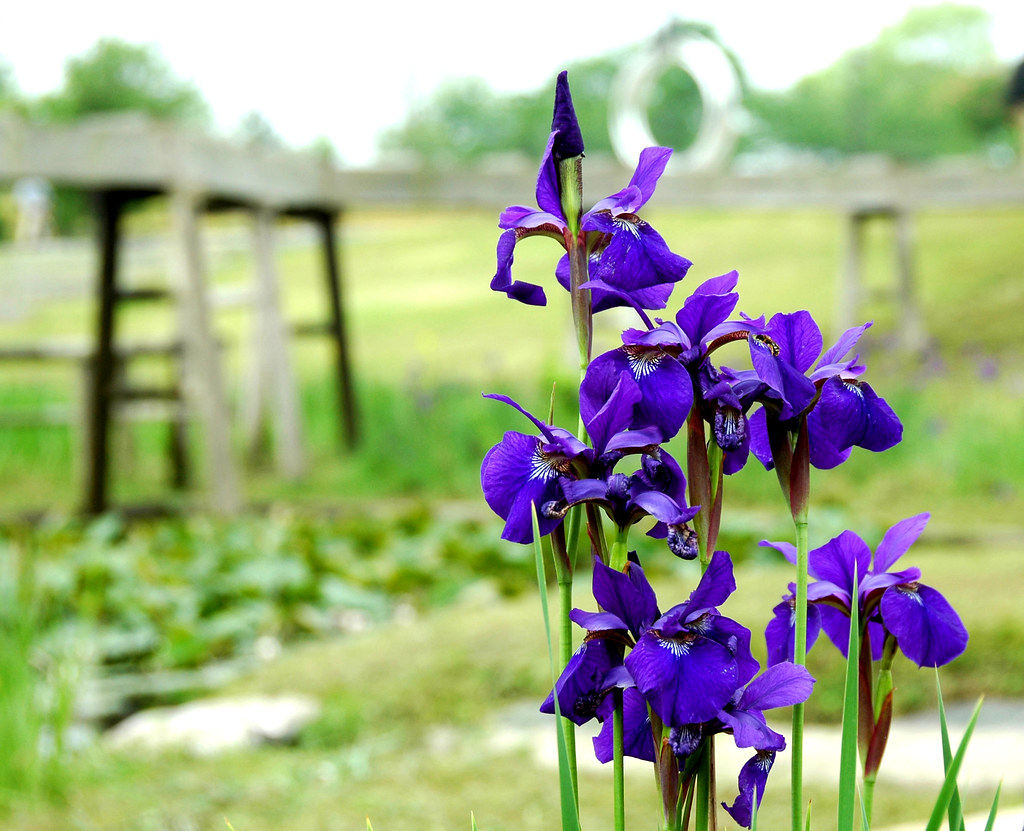
“Iris sanguinea | Ayame, 文目, Siberian …” from www.flickr.com and used with no modifications.
|
Scientific and Common Name |
Description |
Size |
USDA Hardiness Zones |
Growing Conditions and Maintenance |
|---|---|---|---|---|
|
Liriope muscari (Yabu-ran) |
Evergreen perennial with pale lavender flower spikes in autumn. |
Not specified |
5 through 10 |
Well-drained soil in sun, partial shade, or shade. |

“fondo lavanda, hermosa flor …” from www.pexels.com and used with no modifications.
|
Scientific and Common Name |
Description |
Size |
USDA Hardiness Zones |
Growing Conditions and Maintenance |
|---|---|---|---|---|
|
Millettia japonica (False Dwarf Wisteria; Hime-fuji) |
Legume with narrow wisteria-like leaves and violet flowers in summer. |
60 to 90 cm (2 to 3 ft) |
8 |
Rich, moist soil, can be grown in a container. |
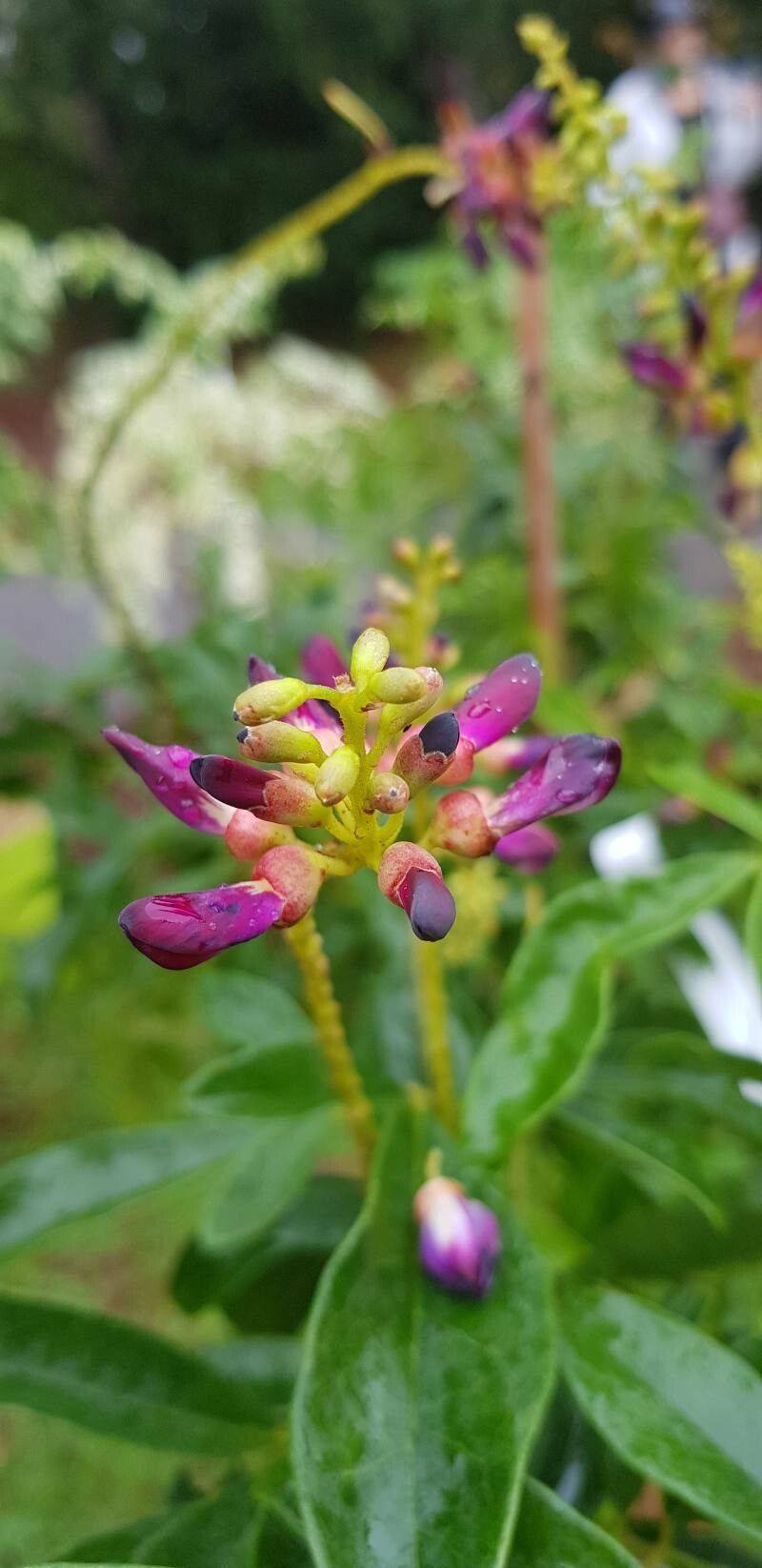
“Millettia japonica (Siebold & Zucc.) A …” from identify.plantnet.org and used with no modifications.
|
Scientific and Common Name |
Description |
Size |
USDA Hardiness Zones |
Growing Conditions and Maintenance |
|---|---|---|---|---|
|
Physalis alkekengi (Chinese Lantern; Hozuki) |
Known for bright orange, papery, lantern-shaped seed pods in autumn. |
Not specified |
3 through 9 |
Full sun, can spread aggressively by rhizomes. |
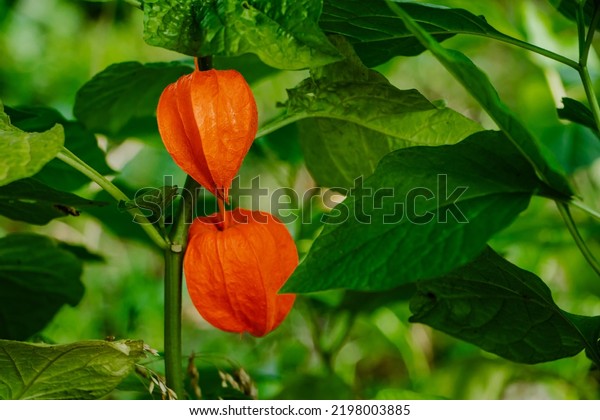
“Physalis Alkekengy Autumn Decoration …” from www.shutterstock.com and used with no modifications.
|
Scientific and Common Name |
Description |
Size |
USDA Hardiness Zones |
Growing Conditions and Maintenance |
|---|---|---|---|---|
|
Platycodon grandiflorus (Balloon Flower; Kikyo) |
Known for purple, white, or pink flowers that bloom in early autumn or summer. |
Not specified |
3 through 8 |
Sunny, rich soil. |
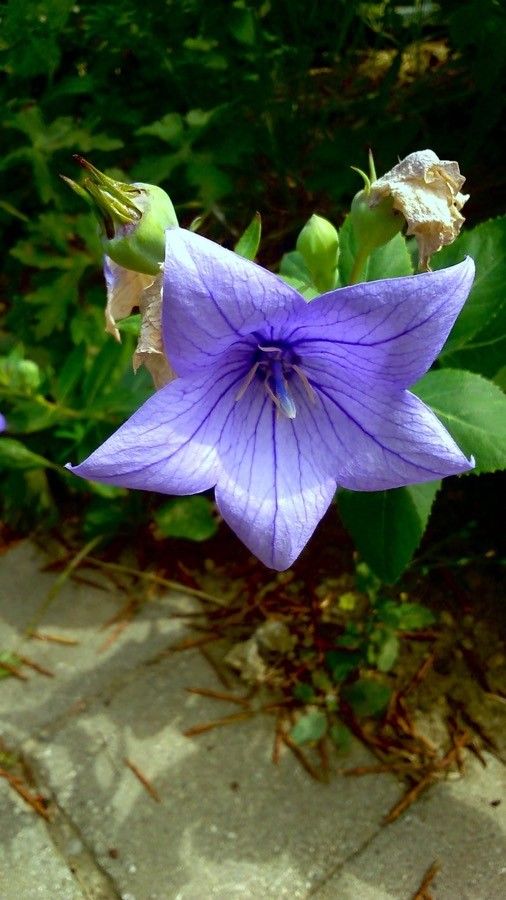
“Platycodon grandiflorus (Jacq.) A.DC …” from identify.plantnet.org and used with no modifications.
|
Scientific and Common Name |
Description |
Size |
USDA Hardiness Zones |
Growing Conditions and Maintenance |
|---|---|---|---|---|
|
Polygonatum falcatum (Fragrant Solomon’s Seal; Naruko-yuri) |
Produces greenish-white delicate pendulous flowers along the stem. |
Not specified |
4 through 8 |
Well-drained soil and partial shade. |

“Polygonatum falcatum A.Gray (World …” from identify.plantnet.org and used with no modifications.
|
Scientific and Common Name |
Description |
Size |
USDA Hardiness Zones |
Growing Conditions and Maintenance |
|---|---|---|---|---|
|
Sedum kamtschaticum (Russian Stonecrop; Kirin-so) |
Creeping sedum with yellow flowers in late summer, drought-tolerant. |
About 15 cm (6 in) |
4 through 9 |
Good drainage and full sun. |
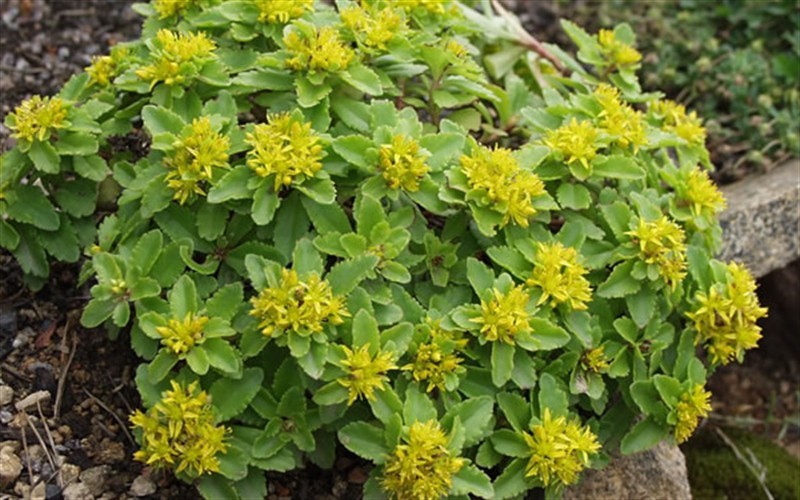
“Sedum kamtschaticum – Russian Stonecrop …” from www.togogarden.com and used with no modifications.
|
Scientific and Common Name |
Description |
Size |
USDA Hardiness Zones |
Growing Conditions and Maintenance |
|---|---|---|---|---|
|
Saxifraga fortunei var. incisolobata (Daimonji-so) |
Mound-forming herbaceous perennial with flowers from August to November. |
Up to 25 cm (10 in) high, 20 to 50 cm (8 to 20 in) spread |
6 through 9 |
Partial to full shade, regular watering. |
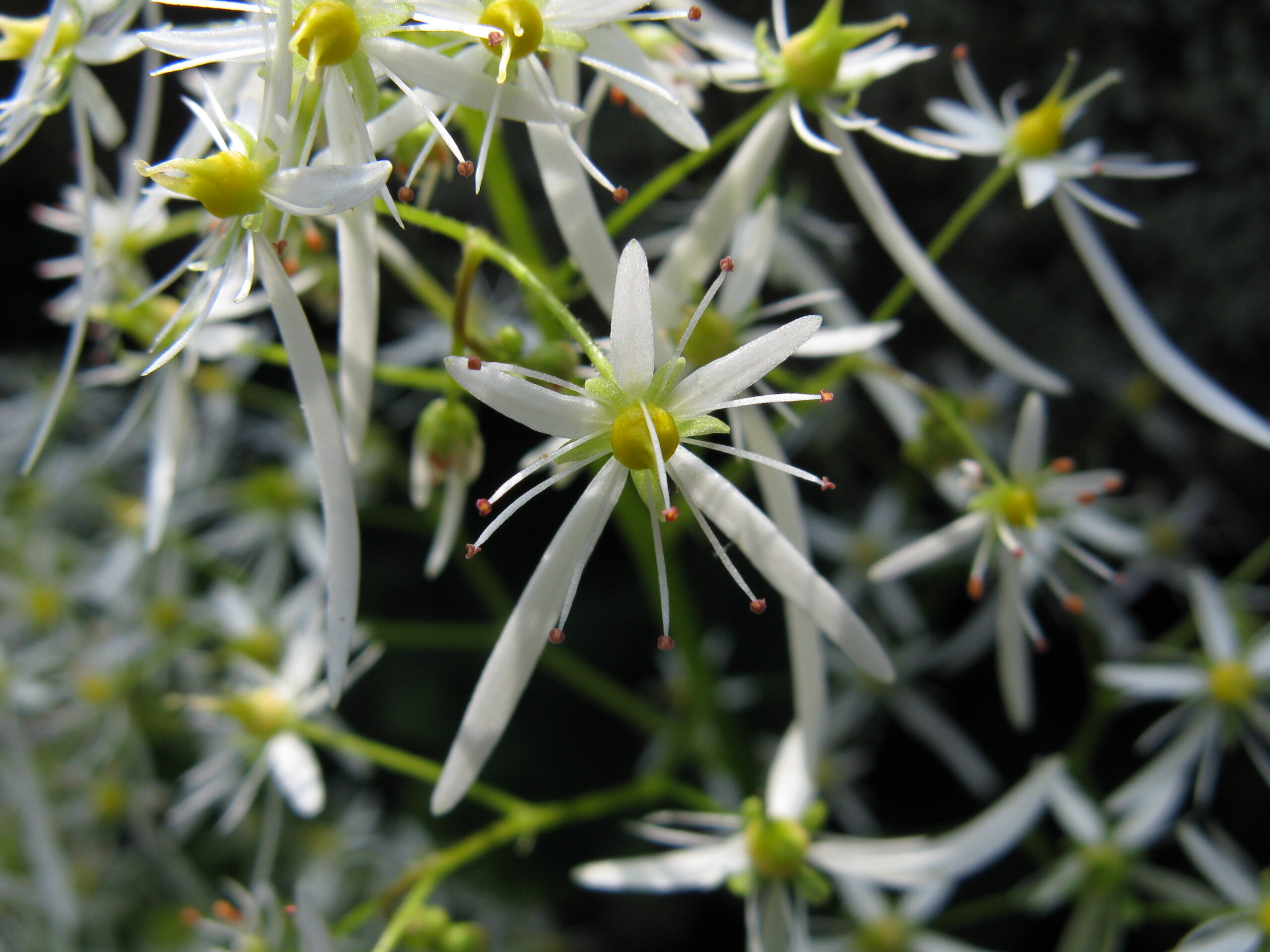
“File:Saxifraga fortunei var …” from commons.wikimedia.org and used with no modifications.
|
Scientific and Common Name |
Description |
Size |
USDA Hardiness Zones |
Growing Conditions and Maintenance |
|---|---|---|---|---|
|
Stauntonia hexaphylla (Mube) |
Evergreen climber with glossy leaves and lightly scented bell-like flowers. |
Can grow to 9 m (30 ft) or more |
8 through 11 |
Tolerant of very acid and alkaline soils, frost hardy. |

“File:Stauntonia hexaphylla Mube …” from commons.wikimedia.org and used with no modifications
|
Scientific and Common Name |
Description |
Size |
USDA Hardiness Zones |
Growing Conditions and Maintenance |
|---|---|---|---|---|
|
Tricyrtis hirta (Toad Lily; Hototogisu) |
Clump-forming perennial with spotted purple flowers in summer to early autumn. |
60 to 100 cm (2 to 3 ft 3 in) high |
4 through 8 |
Moist, slightly acidic, well-shaded conditions. |

“File:Tricyrtis hirta – blossom top (aka …” from commons.wikimedia.org and used with no modifications.
Conclusion
Choosing the right foliage and flowers is essential in crafting a Japanese garden that resonates with the principles of balance, harmony, and natural beauty. This guide has provided a pathway through the complex selection process, emphasizing the importance of considering USDA hardiness zones and specific growing conditions. As you integrate these plants into your garden, you create a space that transcends mere aesthetics, offering a sanctuary of tranquility and a profound connection to the natural world.
Frequently Asked Questions
Creating a Japanese garden can raise many questions, especially for those new to the art. Below are answers to some of the most commonly asked questions, providing you with the knowledge to begin your gardening adventure with confidence.
What Are the Key Elements of a Japanese Garden?
The key elements of a Japanese garden include harmony, balance, and simplicity. Key features often consist of water, rocks, bridges, lanterns, and carefully selected plants that offer varied textures and seasonal colors. The aim is to create a minimalist and naturalistic landscape that evokes a sense of tranquility and reflects the beauty of the natural world.
How Do I Determine the Right USDA Zone for My Garden?
To determine the right USDA Zone for your garden, visit the USDA Plant Hardiness Zone Map website and enter your ZIP code. This will tell you the zone number of your area, which you can use to select plants that are suitable for your local climate. It’s essential for ensuring the plants you choose can endure the coldest temperatures in your region.
Can These Plants Thrive in Non-Japanese Climate Conditions?
Yes, many Japanese garden plants can thrive in a variety of climate conditions outside of Japan. It’s all about choosing the right plants for your specific environment. For example, Azaleas can adapt to different climates if they’re provided with appropriate soil and shade conditions. Always check the USDA Hardiness Zone recommendations and adapt your plant care accordingly.
What Maintenance Do Japanese Garden Plants Typically Require?
Japanese garden plants typically require regular maintenance to keep them healthy and aesthetically pleasing. This includes understanding the specific needs of Japanese evergreen plants and trees as well as the proper care for deciduous shrubs and maples.
-
Pruning to maintain shape and promote growth.
-
Watering, with attention to each plant’s specific needs.
-
Feeding with appropriate fertilizers to ensure nutrient-rich soil.
-
Monitoring for pests and diseases and taking action when necessary.
Remember, the goal is to create a natural and balanced look, so while maintenance is essential, it should never be overdone. For more detailed guidance, explore our comprehensive guide on low-growing plants for Japanese garden design.
Where Can I Source Authentic Japanese Garden Plants?
To source authentic Japanese garden plants, you can start by visiting local nurseries that specialize in Asian or exotic plants. You can also check with botanical gardens or plant societies for recommendations. Additionally, there are many reputable online retailers that sell seeds and plants suitable for Japanese gardens. Just make sure to research the seller and the plant’s requirements before making your purchase to ensure they are suitable for your garden’s conditions.
In the end, creating a Japanese garden is a rewarding journey that blends horticulture with artistry. By carefully selecting the right foliage and flowers and providing them with the care they need, you can cultivate a space that not only showcases the timeless beauty of Japanese garden design but also offers a peaceful sanctuary for reflection and relaxation.

